Build Quality
As we already know the GIGABYTE P750GM features a single 120mm fan design like many other offerings on the market that has come to be the preferred standard for quiet cooling environments due to the ability to move a larger volume of air at slower speeds than a smaller diameter fan. While great for quiet computing environments the key criteria in our evaluation are whether or not the cooling solution is sufficient, not necessarily its sound level or form factor.
External Build Quality
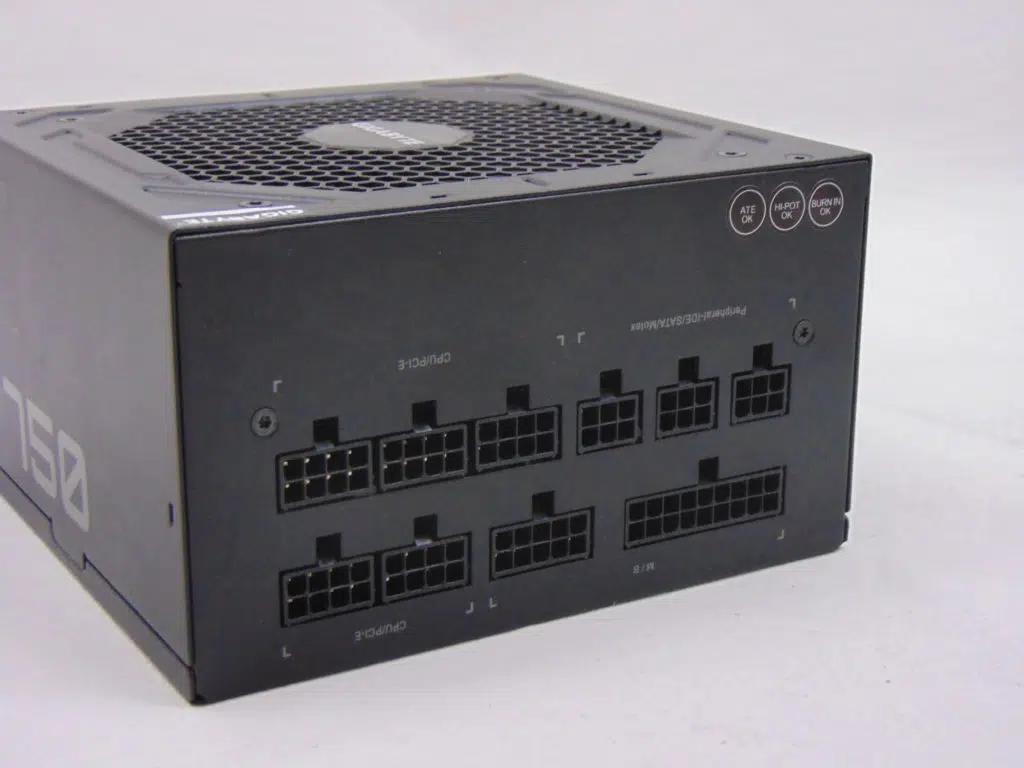
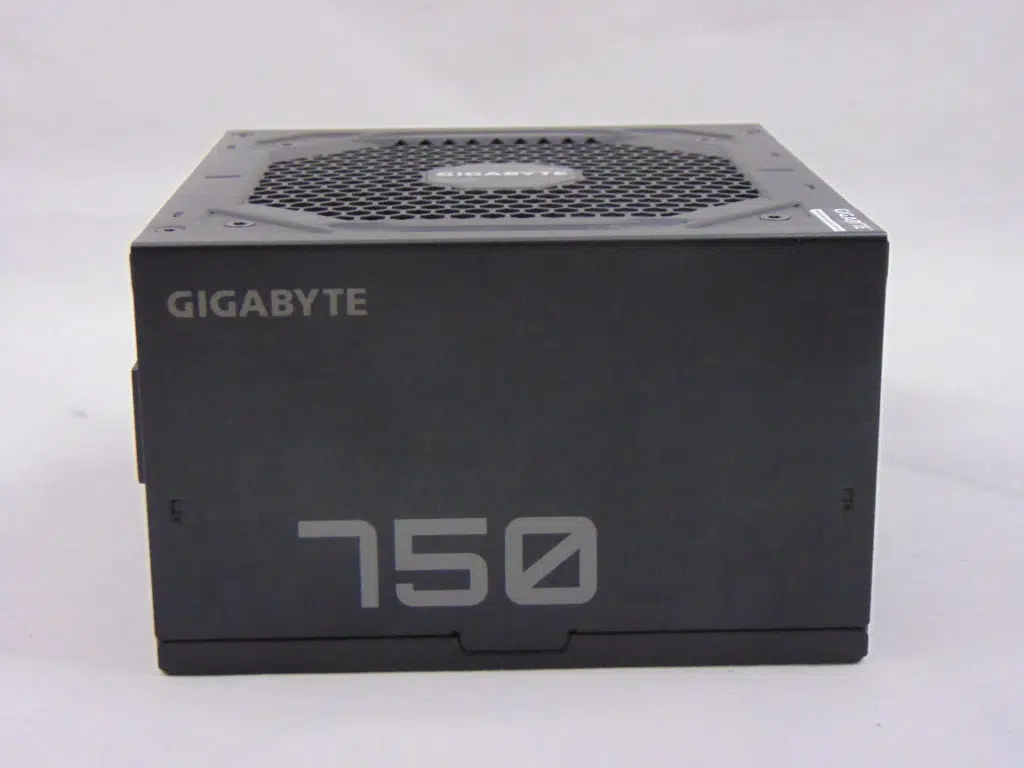


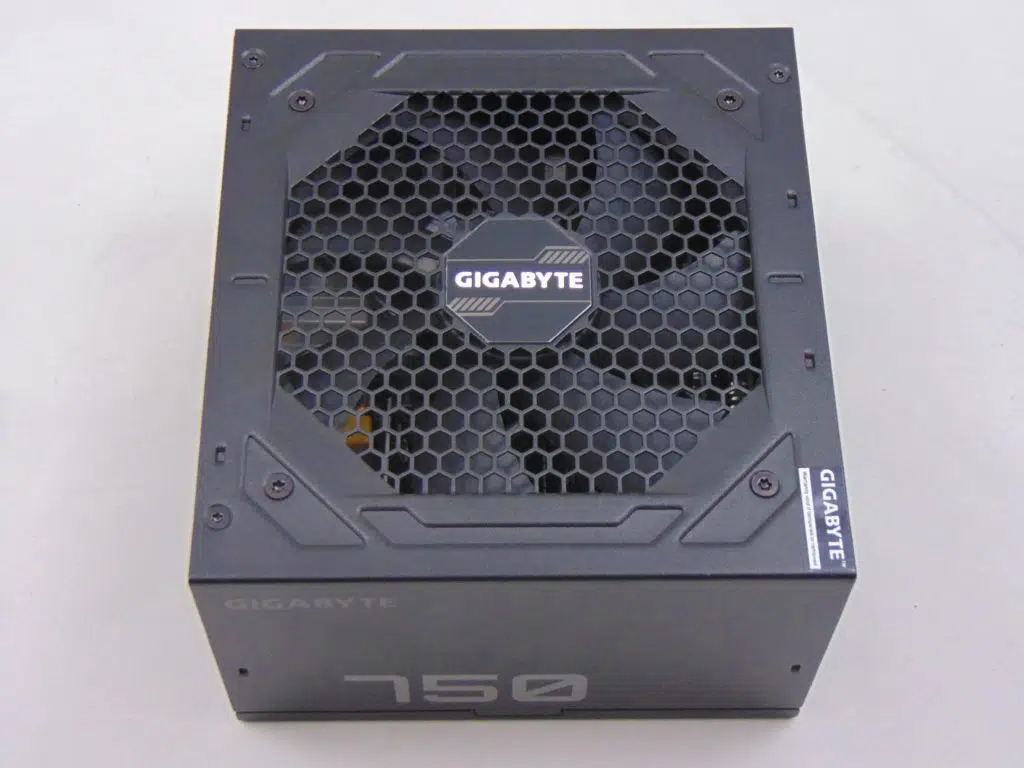
The exterior of the GIGABYTE P750GM is similar to what we have seen from a lot of fully modular overhead fan units trimmed out in slightly textured black. So, the layout is traditional for a fully modular unit with an overhead fan in the ATX12v/EPS form factor but GIGABYTE has done a few things cosmetically with the unit. The fan grille is heavily stylized and the branding is screened on the unit a subtle gray/silver. The modular interface is also well labeled which we always appreciate.
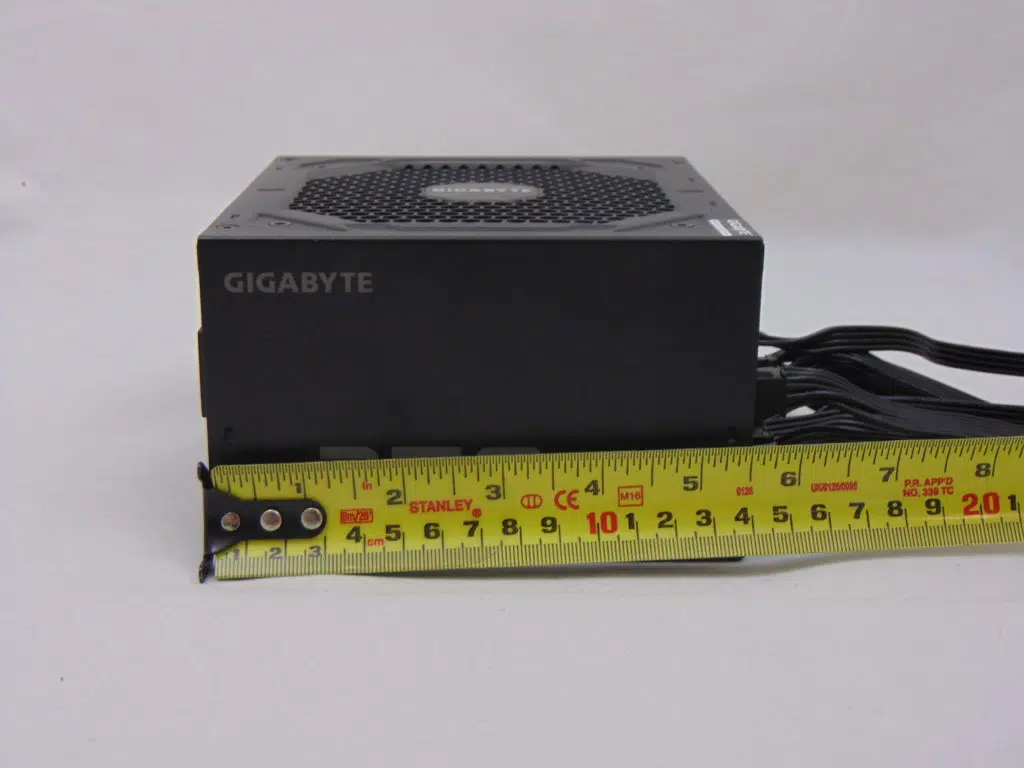
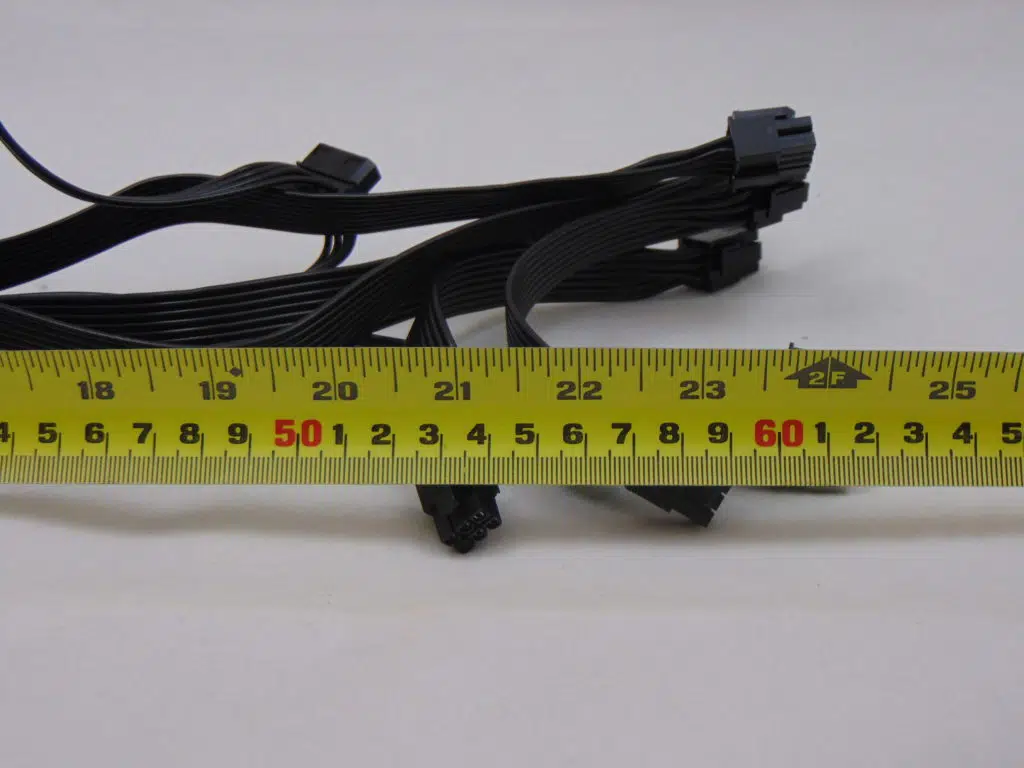
The GIGABYTE P750GM comes in at a total length of ~5.5 inches while the cables come in at a length of ~19″ to 25″ to the first, or only, connector. Additionally, the cables are all FlexForce style cables which are excellent as the unit is fully modular.
Internal Build Quality
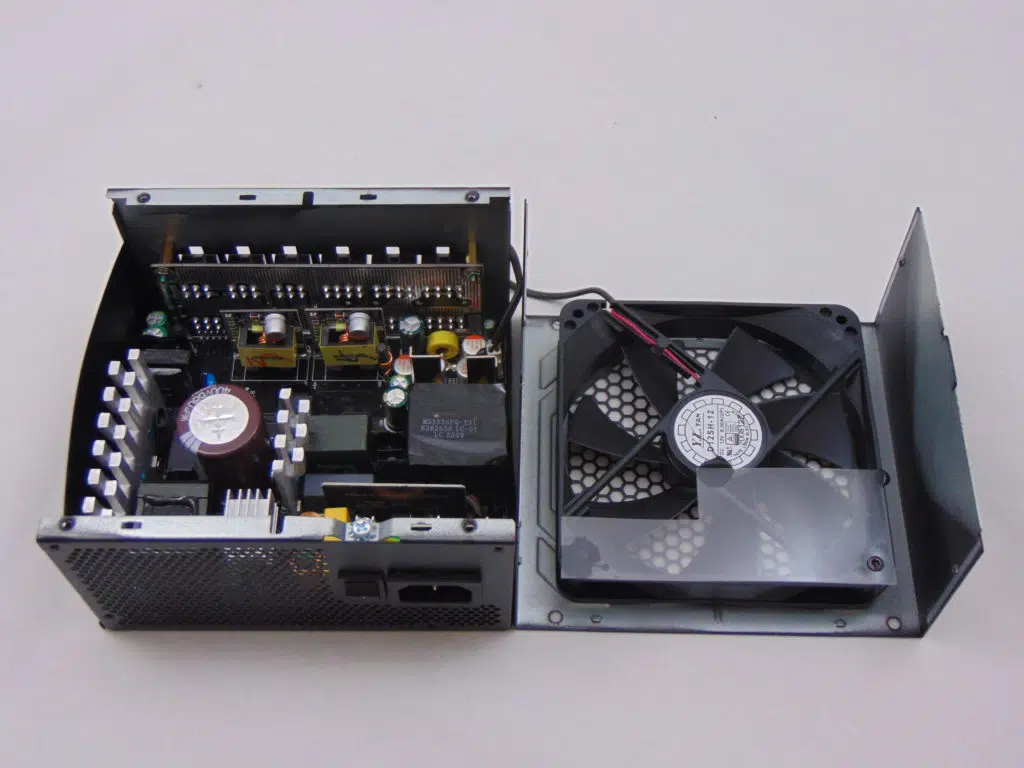
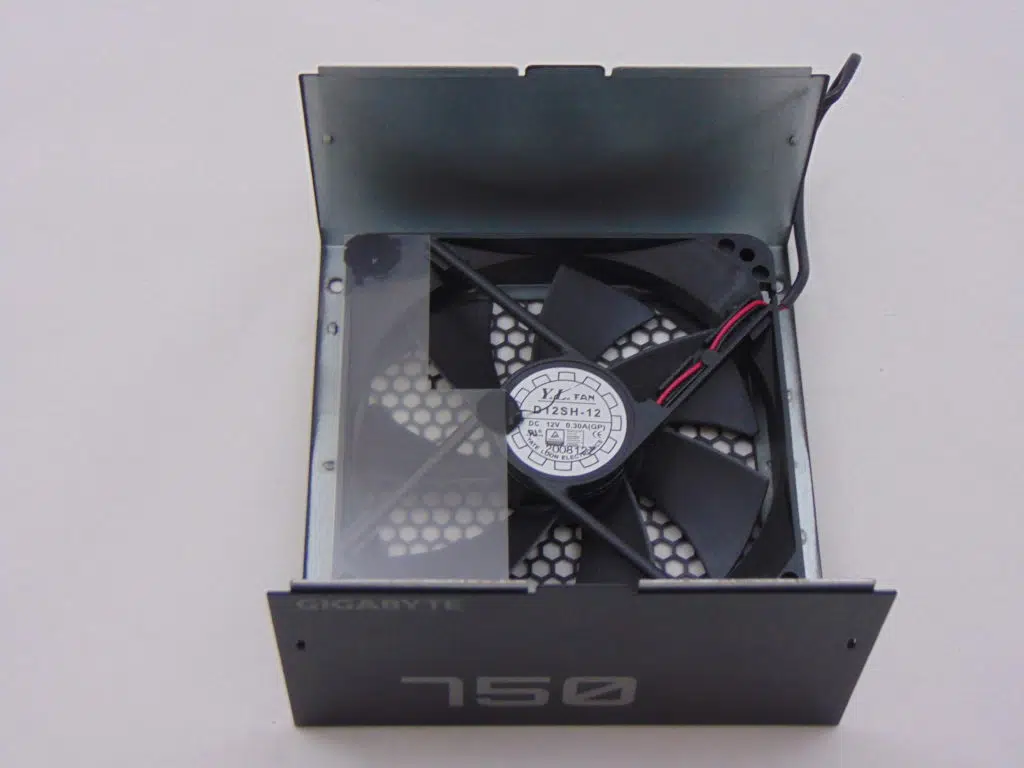
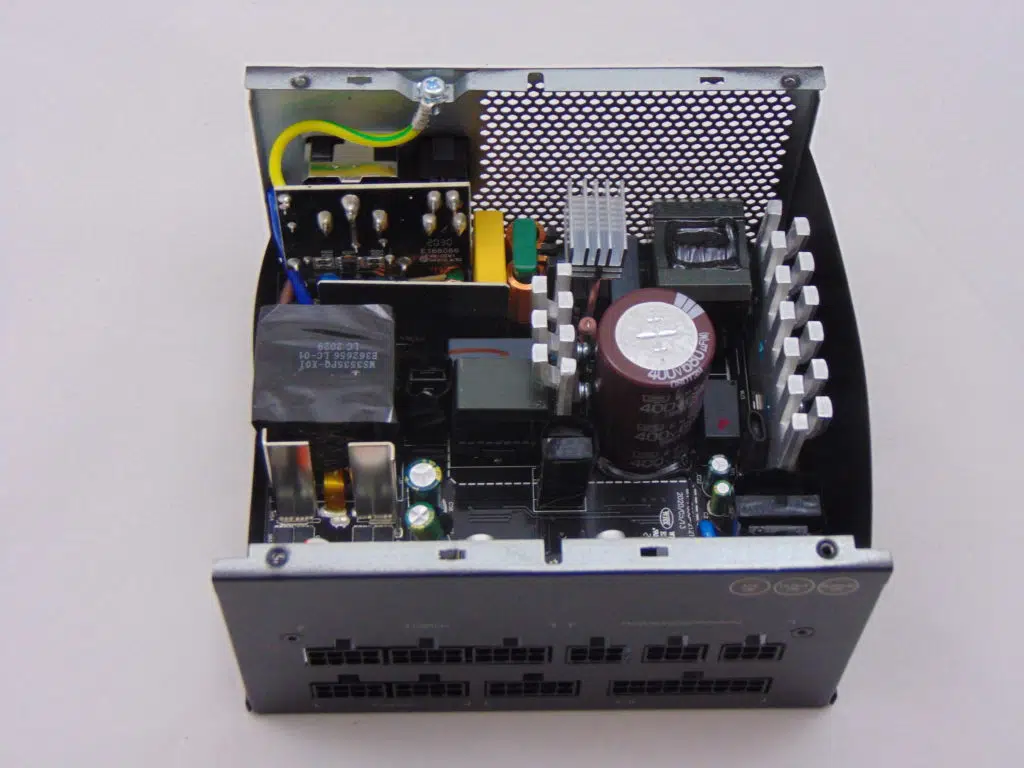

Once we open the top of the GIGABYTE P750GM, we see a unit built by MEIC which is not something we see that often. The topology has a half-bridge resonant LLC primary with a synchronous rectification secondary and DC-DC VRM’s for the minor rails. The fan cooling this unit today is a Yate Loon hydraulic bearing fan rated at 0.30A at 12v. It is paired with five heatsinks of various sizes and configurations. Lastly, the soldering is generally very good on the backside of this dual-layer PCB.
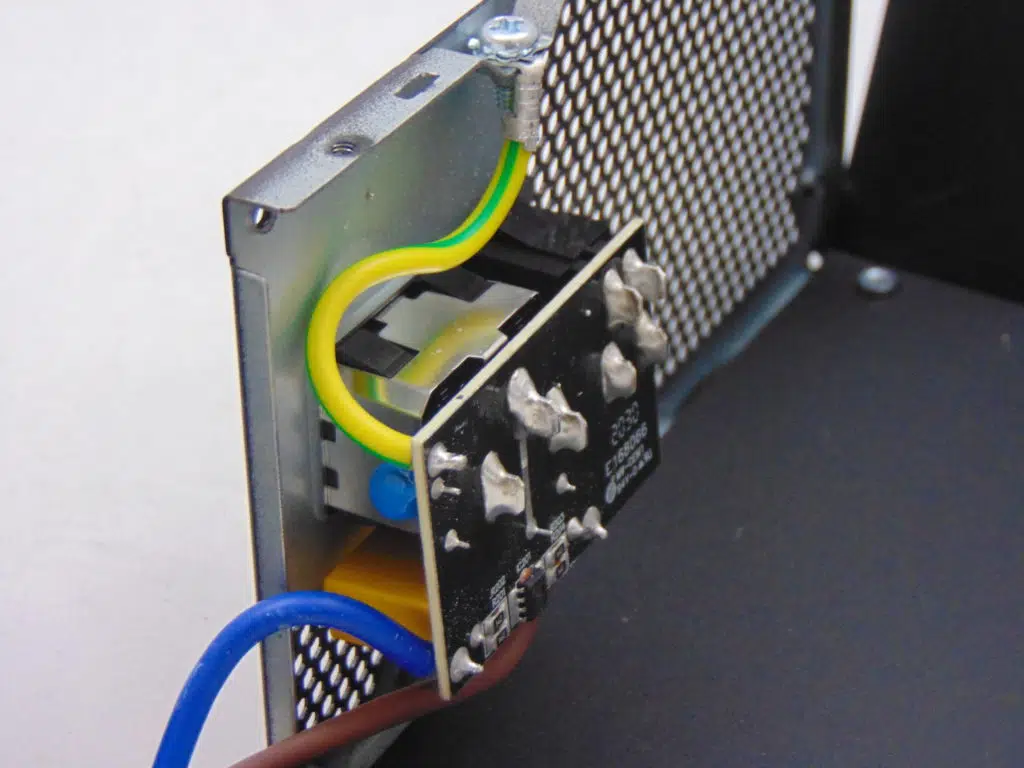
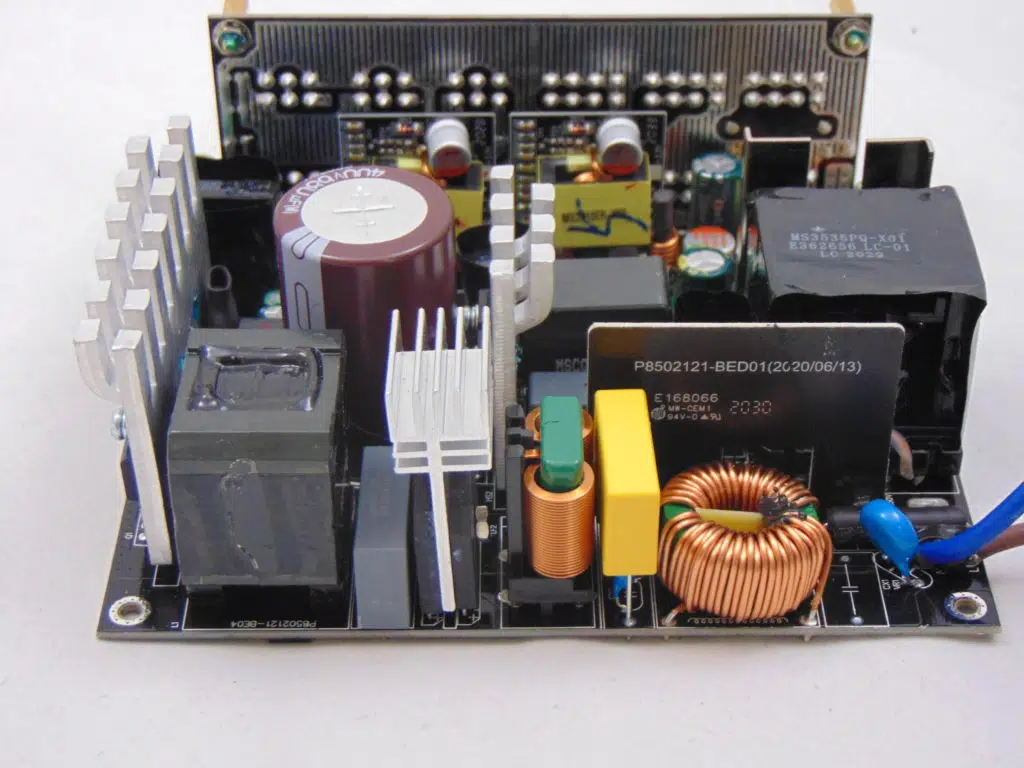
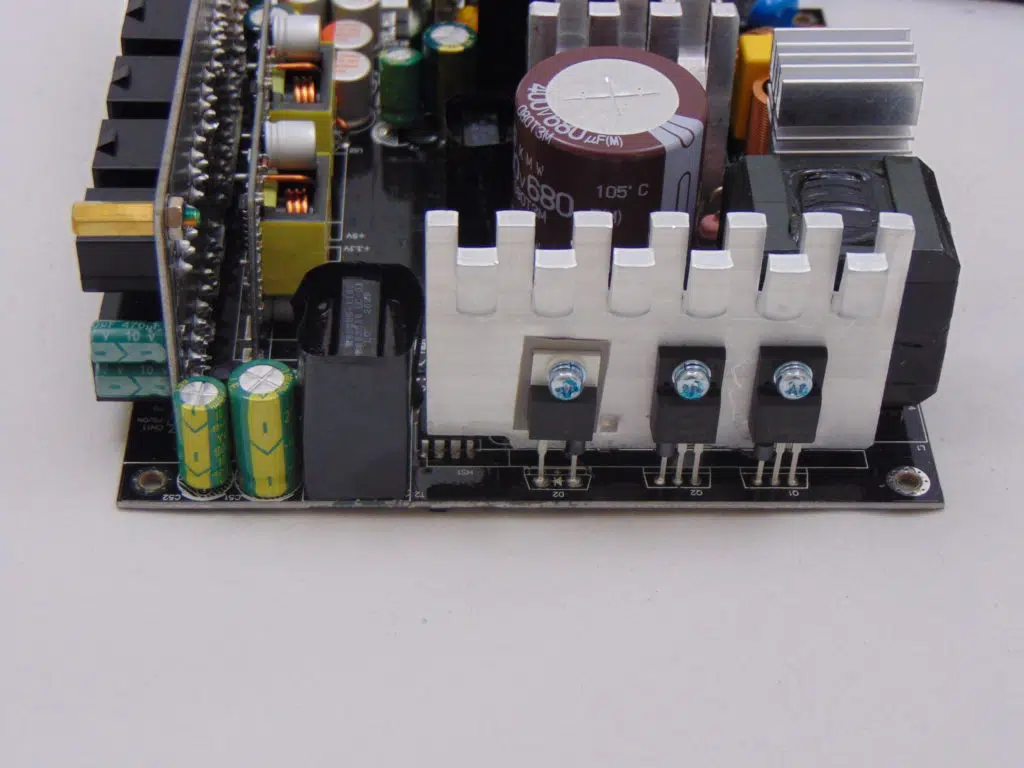
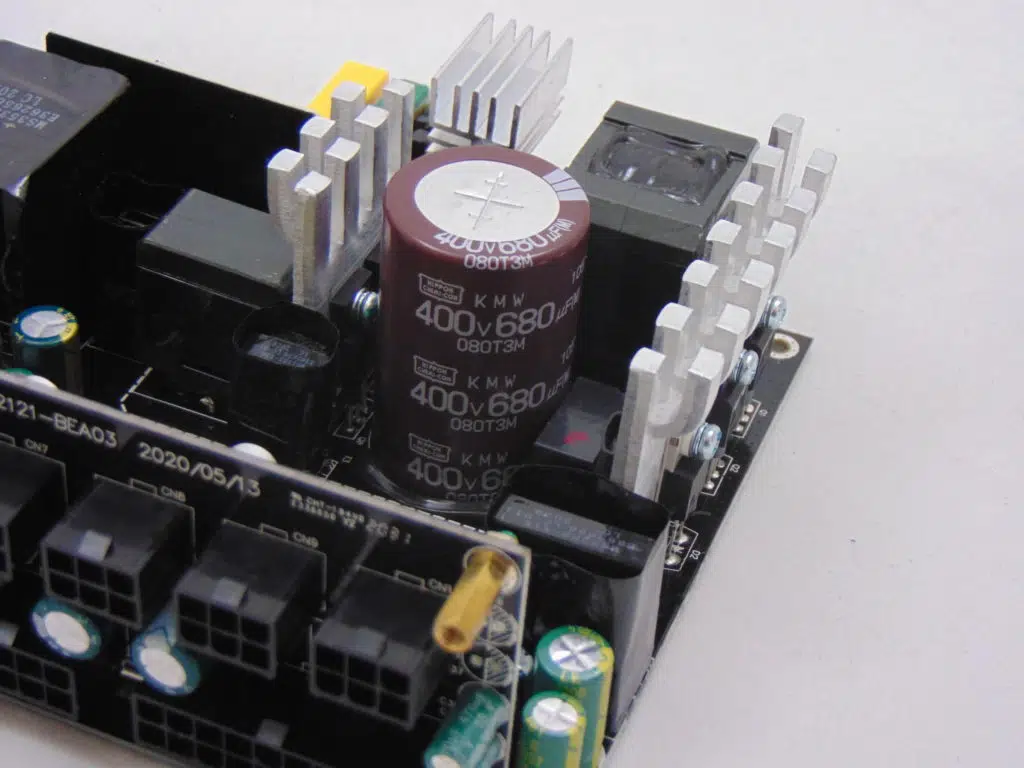

The GIGABYTE P750GM input filtering begins up on the housing itself where we find a PCB with some X capacitors and Y capacitors. The balance of the input filtering is found on the back edge of the main PCB. There are then a pair of bridge rectifiers next in line sandwiching a rather large heatsink. The APFC coil is next and it is followed by the APFC power components attached to the other substantial heatsink on the primary side. Speaking of this heatsink, the main input capacitor is right next to it and it is provided by Nippon Chemi-con with a rating of 400v 680uF 105C. This is a much larger capacitor than what we have seen on a number of other 700W-750W units to date. The main switching transistors receive their own heatsinks just the interior of the primary capacitor as well.


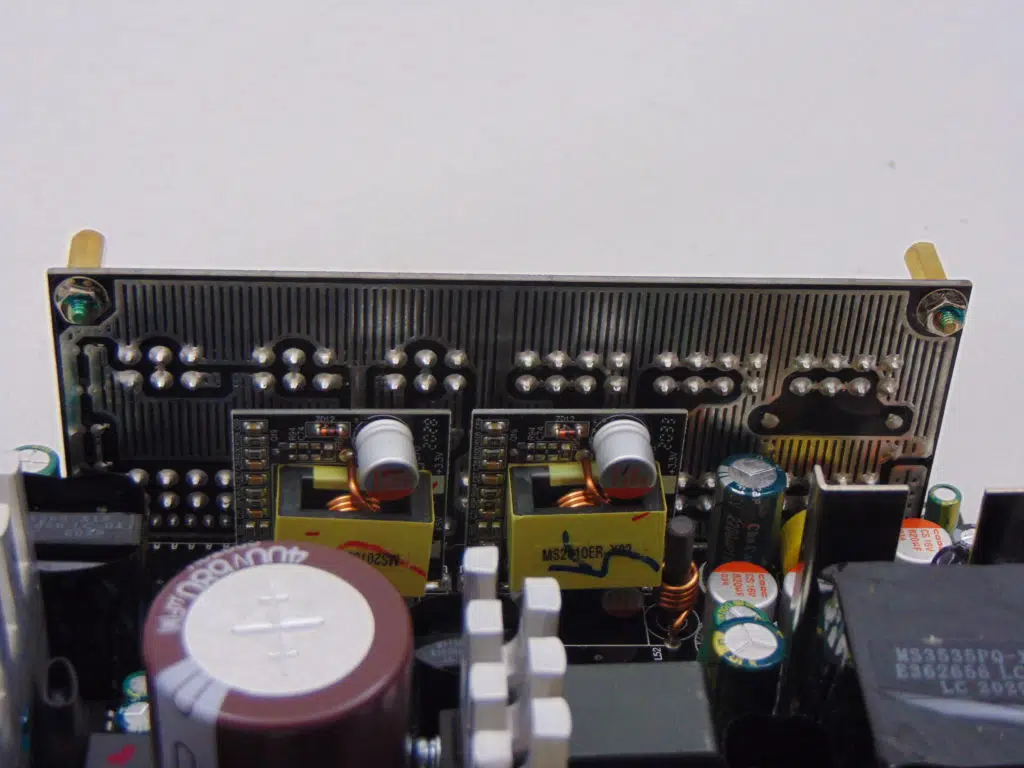

The secondary side of this unit looks rather open which is good from an airflow perspective. Trailing from the middle to the edge of the PCB, on the secondary side, we find the transformers with the main transformer being all the way to the edge of the PCB. In front of this transformer, we see a pair of heatsinks for cooling the 12v MOSFETS which were visible earlier on the solder side of the PCB. Between these transformers and modular PCB, we find the DC-DC VRM PCBs.
The DC-DC VRMs are housed on their own PCBs (populated by CODC solid capacitors) up against the modular PCB and edge of the main PCB. Around these PCBs, we find a few standard electrolytics provided by Chn Cap and more solid electrolytics by CODC. The modular PCB construction looks very nice and there are more CODC solid capacitors here as well as some more Chn Cap wet electrolytics. Interestingly, there are a number of spots that are screened for more capacitors that are not populated.
Build Quality Summary
Today’s GIGABYTE P750GM is the first power supply we have seen from GIGABYTE and it starts things off on a mixed foot. Overall, the integration looks excellent but the layout and component selection leaves some serious questions. The exterior is well done with a bit of attention paid to branding this unit and providing it with a presence. The cables are all FlexForce style cables which certainly adds to that presence.
The component selection is definitely mixed. The unit is advertised as having “Japan Capacitors” and the Nippon Chemi-con is technically a “Japan Capacitor”. The other capacitors we find are CODC solid capacitors and Chn Cap standard capacitors. Neither of these are among the “Japanese” capacitor manufacturers that we have seen before and finding much of a presence for them has been difficult.
Generally, one does not hide things that are good. Moving on from that, we see a hydraulic bearing fan from Yate Loon cooling this unit. All in all, then, the GIGABYTE P750GM is a bit of a mixed bag starting things off today. Let’s move on now to the load tests and see how this unit performs!
